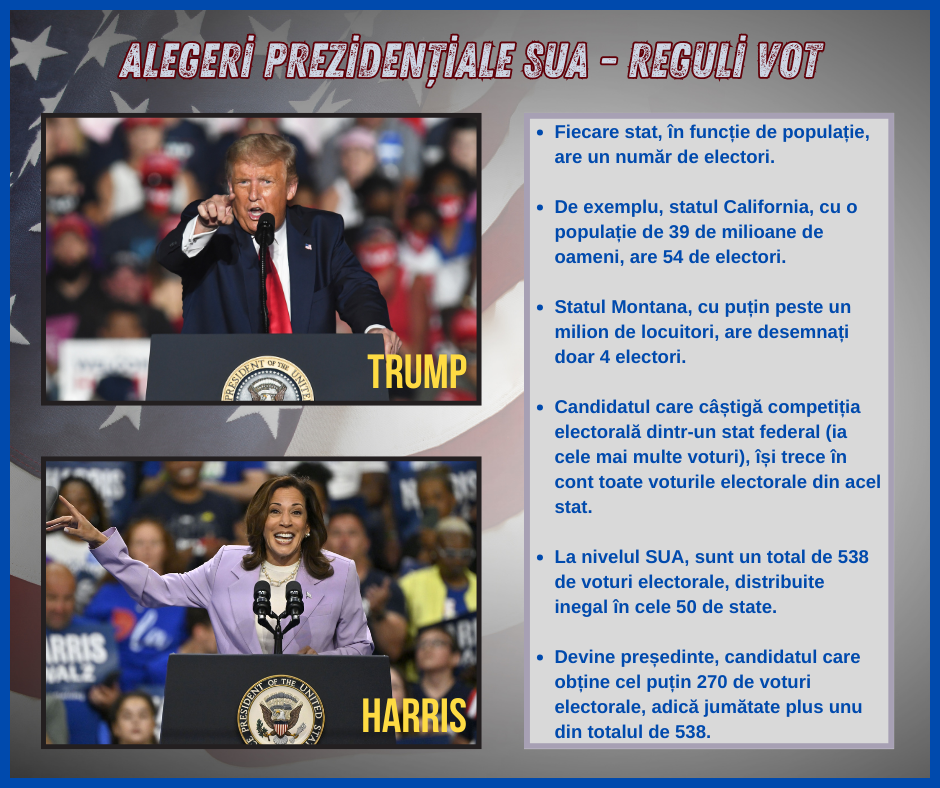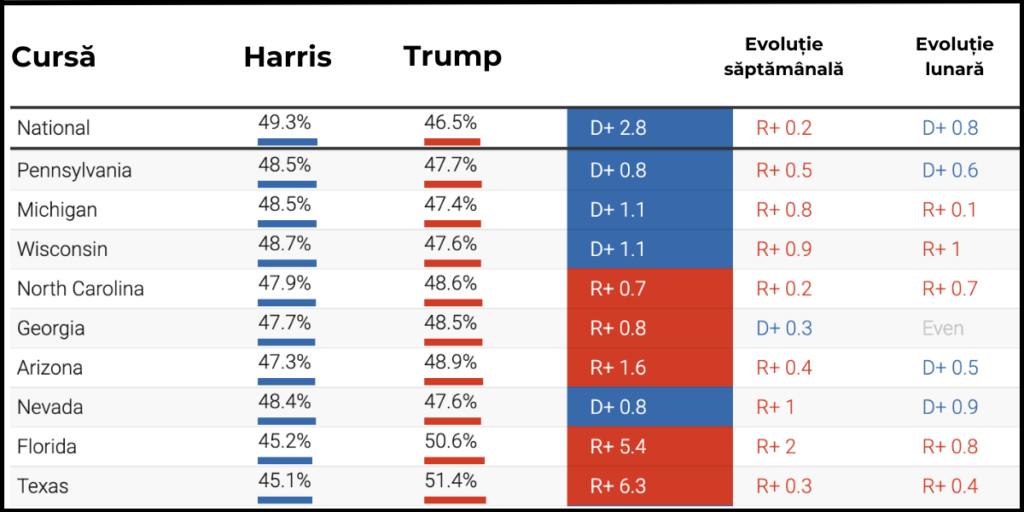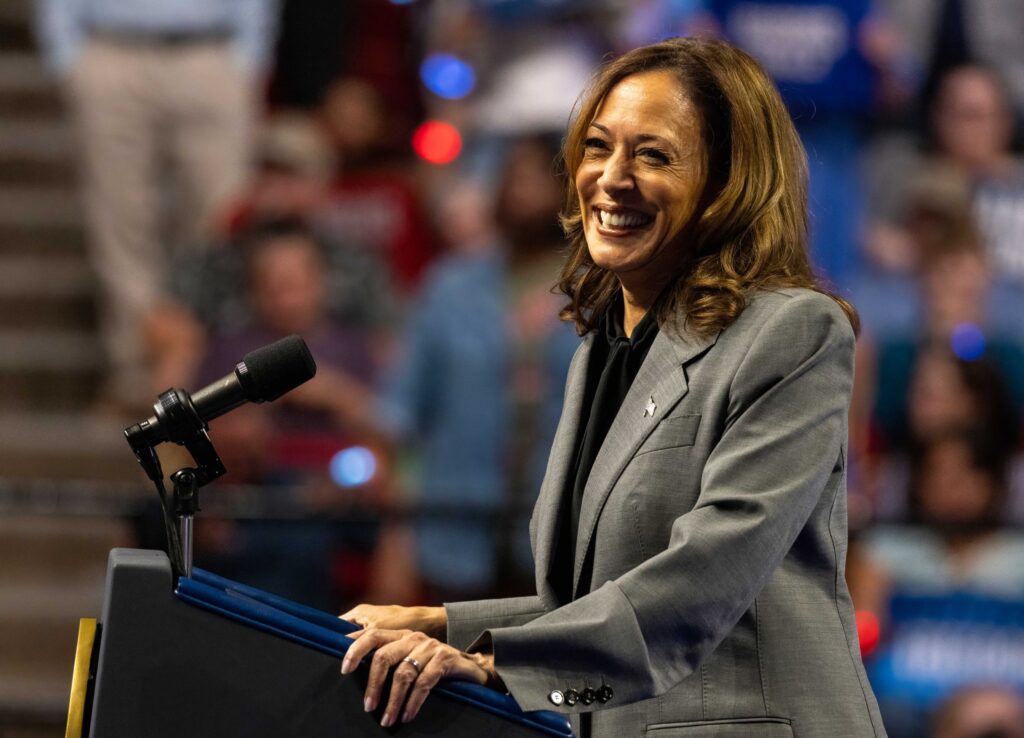There are exactly three weeks left until the US elections, and the whole world is waiting for the results to see in which direction events will unfold.
The outcome of the US electoral confrontation will determine how the war in Ukraine will end, America’s relationship with European NATO countries, and the situation in the Middle East.
Paradoxically, during the campaign, candidates talk little or not at all about global challenges, focusing on domestic issues, and when one of them reaches the White House, they are overwhelmed by the large number of decisions they have to make regarding the course of the world.
"Opinion poll averages show that Donald Trump and Kamala Harris are tied in seven key states, with the two separated by less than one percentage point in five of them. It's hard to remember any presidential race where the polling score was so close at this stage of the campaign," wrote Nate Cohn, a specialist in political polls, for the New York Times.

The Big Mistake of 2016
In a simulation conducted by the fivethirtyeight.com website, Kamala Harris wins in 53 out of 100 electoral races, while Trump wins in 47. So, the Democratic candidate has a 53% chance of becoming the President of the United States.
But the score is very close. For example, in 2016, the same site announced that Hillary Clinton entered election day with an 88% chance of victory and Donald Trump won.
The biggest variations in the average this week were recorded in Michigan and Wisconsin. And in this case, a large variation doesn't mean very large. Trump gained only one point according to the average of the polls we analyzed - the kind of move that may seem seismic in such a closely divided and stable race, but which would not have received much attention a few weeks ago.
Nate Cohn, New York Times
In that year, all polls favored the Democratic representative from a distance and they were wrong. Since then, experts have worked extensively on recalibrating sociological studies, trying to avoid major errors, so the projections have become much more conservative.

Pennsylvania, a Mandatory Victory
To reach the White House, Kamala Harris must win three states where she currently leads by a slim margin. These are Michigan, Wisconsin, and Pennsylvania.
Donald Trump, to become president, must win in the key states where he also leads by a slim margin, namely Arizona, Georgia, and North Carolina, but he is also required to secure Pennsylvania.
Harris plans more campaign events and political proposals aimed at attracting black men. She intends to announce three new policy programs: granting $1 million in loans to small businesses, training and mentoring programs to help black men enter industries with many job opportunities, and launching an initiative focused on health issues disproportionately affecting black men.
Politico, USA
As seen, the entire electoral battle tends to concentrate on a single state targeted by both candidates.
Pennsylvania has 19 electoral votes, and whoever comes out on top here will have a clear path to the White House.
Kamala Harris is ahead of Donald Trump in this state by 0.8%, losing ground compared to last week, according to the projection made by Silver Bulletin, another site presenting a model for calculating chances based on opinion polls.

Trump Leads in Betting Houses
Kamala Harris's campaign strategy relies on armies of volunteers trying to persuade people one by one in key constituencies to register and vote.
On the other hand, Donald Trump relies heavily on mobilization through his speeches at campaign events and has not invested as much in door-to-door persuasion operations.
Another subtle but fairly accurate indicator is represented by the odds in betting houses.
In the average compiled by "Real Clear Politics" from eight betting houses in the USA, Donald Trump leads by almost 10 points, with a favorable odds of 54.3 to 44.7 compared to Kamala Harris.
It must be said that since 1866, when the odds for presidential candidates have been listed, the favorite has lost only twice.
It happened in 1948 when Democrat Harry Truman defeated Republican Thomas Dewey, and in 2016 when Hillary Clinton lost to Donald Trump, as shown in an article published by USA Today.
The key element that allowed Donald Trump to turn the tide in his favor is the violent attack on immigrants, promising their urgent deportation and using harsh language against them, as announced by political commentators in the USA.
Three weeks before the elections, although Kamala Harris is still leading in national polls and is favored to win, Donald Trump has narrowed the gap and is the favorite in betting houses.

